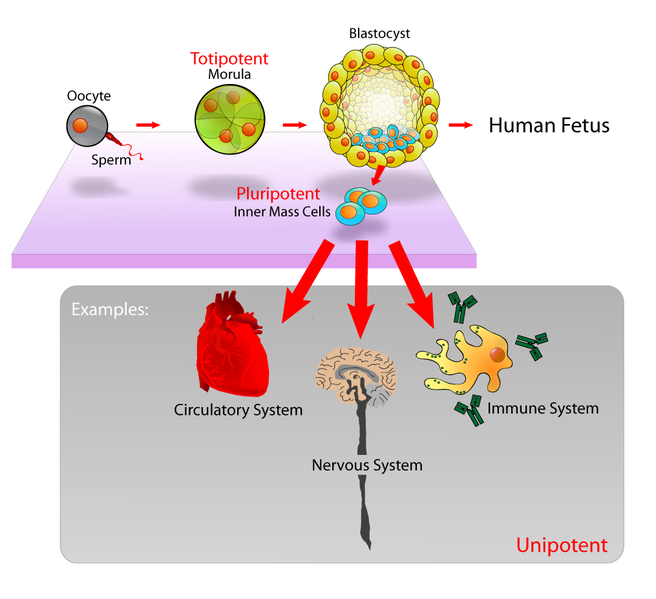Induced pluripotent stem cells, commonly abbreviated as iPS cells or iPSCs are a type of pluripotent stem cell artificially derived from a non-pluripotent cell, typically an adult somatic cell, by inducing a "forced" expression of certain genes and transcription factors.These transcription factors play a key role in determining the state of these cells and also highlights the fact that these somatic cells do preserve the same genetic information as early embryonic cells.The ability to induce cells into a pluripotent state was initially pioneered using mouse fibroblasts and four transcription factors, Oct4, Sox2, Klf4 and c-Myc, in 2006.This was then followed in 2007 by the successful induction of human iPSCs derived from human dermal fibroblasts using methods similar to those used for the induction of mouse cells. These induced cells exhibit similar traits to those of embryonic stem cells (ESCs) but do not require the use of embryos. Some of the similarities between ESCs and iPSCs include pluripotency,morphology, self-renewal ability, a trait that implies that they can divide and replicate indefinitely, and gene expression.



Authors: Philip Durkin and Susanne Coleman
Grade Level: 5
For additional free online lessons integrating media literacy and critical thinking into the curriculum, go towww.projectlooksharp.org.
Summary:
Students will view the first scene from the “The Lion King” during which baby Simba is introduced. They will analyze the interactions or relationships they observe between the living things in each environment and infer which relationships are realistic and which are fictional and explain their reasoning.
Key terms: ecology, biotic factors, abiotic factors, population, community, ecosystem, symbiosis, mutualism, commensalism, parasitism, predator-prey
Objectives: